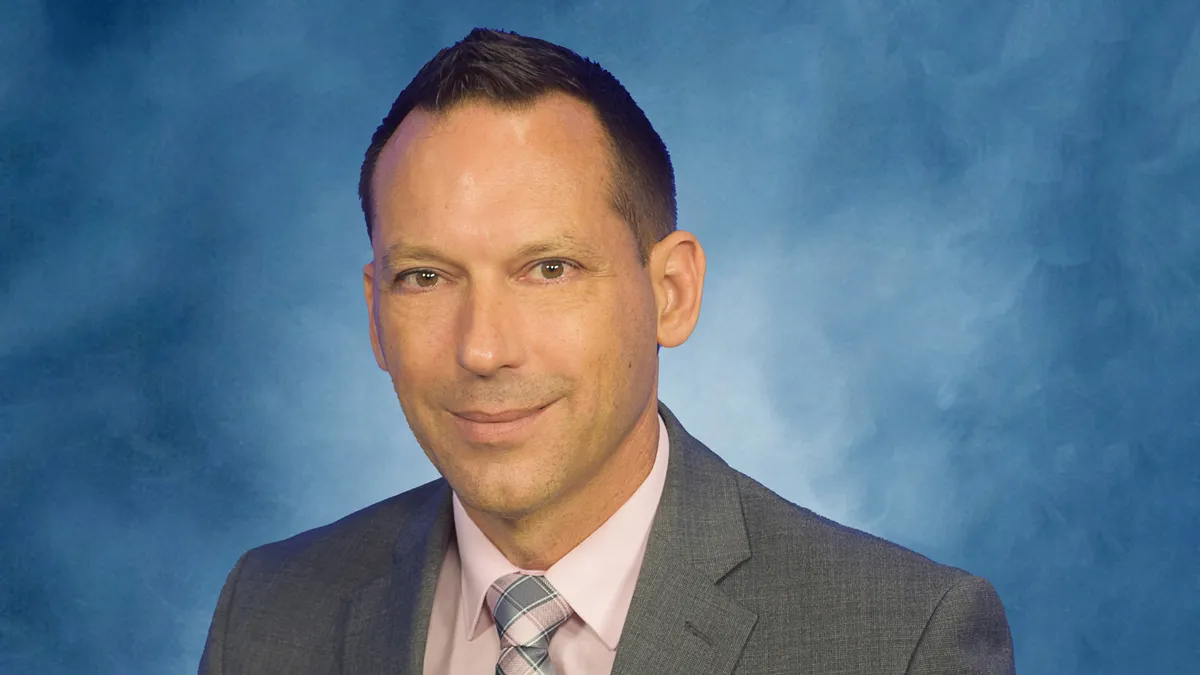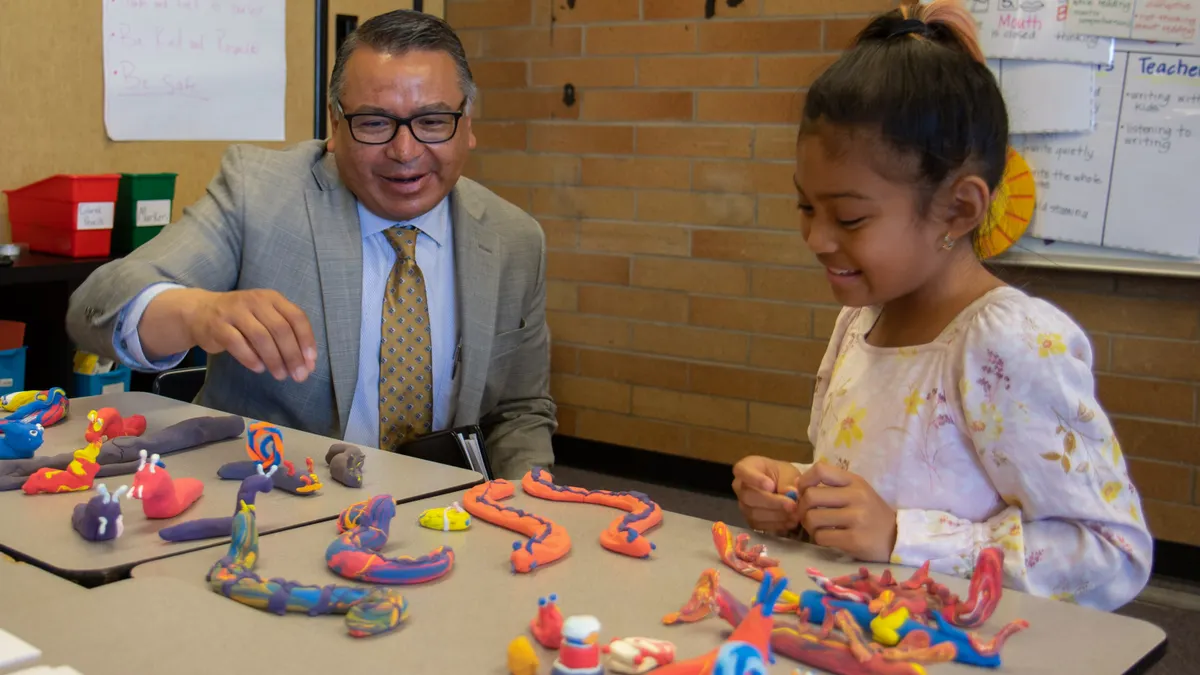“I always say a school's only as strong as its community, and a community's only as strong as its school.”
For Haines City High School Principal Adam Lane, everything always comes back to building community.
Located east of Tampa in Florida’s Polk County, the school was one of several in the district to serve as a designated school shelter when Hurricane Ian made landfall in September — and though Polk County didn’t see the level of catastrophic damage other areas did, it was still struck by power outages and flooding.
Amid what was clearly a stressful event for many residents, Lane seized the moment to alleviate concerns and build connections.
“When a school opens up its doors to the community to come in to be safe, you talk about building relationships,” Lane says. “Guests that I had that were so thankful to be able to sleep and eat at my school and stay safe, they're now coming to volleyball games. I see them at football games. It really gives them a chance to be exposed to a school and all the great things they have to offer.”
All told, Haines City High opened its doors to 245 people, 27 dogs, nine cats and two turtles, Lane says. And his enthusiasm to serve and support those "guests" for three days is emblematic of the emphasis he’s placed on building a culture of positivity and accountability among his students and staff — so much so that many of the former have later returned to be part of the latter.
High-Five Fridays and the power of positivity
“Even though we're a large high school — we're about 2,800 students, 245 staff — you wouldn't know it, because everybody knows each other,” Lane says. “We really make it a point of pride every day to do fist bumps, high fives, ask how your day's going.”
The success he’s had in fostering that level of community is central to what has kept Lane at Haines City High for eight years. The school serves a student population that is 59% Hispanic, 24% Black, 13% White, 2% Asian and 2% multiracial.
To connect with students, he prioritizes blocks of time for getting around the school and being seen. “The emails, the phone calls, the office work — it never stops. And it can consume you and it can keep you in your office all day,” Lane says, noting that the first 30 minutes of the day when students are arriving and the last 30 minutes as they’re departing are particularly important.
“It's being out and about. Being seen. Always having a shirt on that has your name — Mr. Lane — so they know who you are,” he says. “Or, I have a lot of large signs I wear around my neck. ‘Thank you, from Mr. Lane.’ Or ‘Good morning from Mr. Lane.’”
This approach to relationship building, coupled with adopting positive behavior interventions and supports, has helped him lower discipline referrals and raise the school’s graduation rate 17 percentage points, to 89%, over his tenure. He notes that the school saw a 6 percentage point decline to 83% during pandemic-era remote learning, but has since risen back to 86%.
“Our focus was never even on grad rate, it was on discipline and behavior. But automatically our graduation rate went up because the behavior of the students got better,” Lane says.
“You really need a school that has that culture and climate of excitement of ‘This is where it's at. This is where I wanna be. If I'm skipping school, I'm missing something,’” Lane says. The current number of students with 10 or more unexcused absences is 238 students, less than 1% of the school’s total student population.
But he acknowledges getting there is a multistep process that requires taking time to hear from the school community and gain buy-in on positive behavior interventions and supports. Among his steps:
- Multiple meetings with students and staff to discuss expectations of behavior expected in classrooms, the cafeteria, hallways and other parts of the school building.
- The creation of a “Hornet Buck” currency. Staff are given 100 Hornet Bucks at the beginning of each month to award to students who meet expectations.
- Opening a school store “that’s like a Super Target” where those students can exchange their bucks for school swag including pens, pencils, jackets, shirts, water bottles and earbuds.
Most important, he says, was that he didn’t come in and announce the behavioral supports initiative as a mandate. Instead, he “sprinkled positivity” throughout the school day to set the tone.
In morning announcements, he spent five minutes recognizing the accomplishments of students, teachers, academic and athletic teams, and others in the school community. He emailed customized birthday messages to staff with photos related to things they like. He issued positive office referrals to students with good attendance or those who helped on a day where a substitute led the class, among others.
“Somebody turns [a student’s] name in that they've done something positive like turn in a cell phone,” says Kimberly Norman, the school’s financial secretary. When that happens, office staff put together an award and a prize pack, then invited the student to meet with Mr. Lane and have a picture. “And we send that out to the staff so everybody can see what good things these kids are doing.”
Lane also provides a sense that the door’s always open to discuss any decision and work through problems, says Nick Johnston, an English teacher at Haines City.
“There's a lot of transparency on his end in terms of, ‘Here's what information I have. Here's what I know. Here's the decision that I'm able to make based on what we have,’” Johnston says. “I think too often, unfortunately, people in leadership want to gather every single piece of information, and then you're not really able to make a decision, or a decision comes too late.”
Positive gains yield personnel returns
A further testament to Lane’s success in building a strong school culture: Former students have returned to serve as staff later on.
Despite other schools nationwide struggling with teacher shortages, “I don't think I've had what you would call a vacancy in over five years,” Lane says. “I have teachers retire, I have teachers leave the profession, and I'll have a vacancy temporarily, but I always have a long-term substitute who’s ready, so when that vacancy comes up, I've already got someone on my campus that's to fill it.”
When students are juniors and seniors, Lane addresses them and offers an invitation to return and work with him. They may return initially as a substitute, secretary, paraprofessional or, once they’ve completed a degree, teacher. But there’s room to work up to being a dean or athletic director or assistant principal — or “even taking my job as the principal in a few years,” he says.
“Your mentality is to get these students ready to go out into the real world, to have jobs and do great things,” Lane says, “but we never think about ‘Why not bring them back to the campus where I need staff?’”
Haines City offers internships to current high schoolers, placing them in student aid positions to watch, observe and assist a teacher or front office secretary. This experience, he says, helps expose students interested in education as a profession while planting the seeds for those who may not have fully considered it yet.
For students who go on to institutions like University of Central Florida, Polk State College, and the University of South Florida, he also offers the opportunity to substitute at Haines City while they’re in school. “They're working on their college degree. They're making money. They're gaining experience,” Lane says. “And then when they graduate with their degree, they're already on my campus as a substitute. And it's so natural for them to flow right into a teaching position.”
He focuses on retaining educators and staff with reinforcement and support, recognizing achievements and years of service to help boost staff morale.
“I just think it's really important that principals know you're there to make sure there's a platform that's made for people to have buy-in and be heard,” Lane says. “And if you have that, I think you're gonna have buy-in and people wanna work at your school.”





















